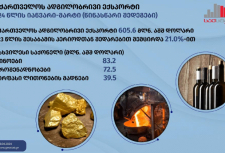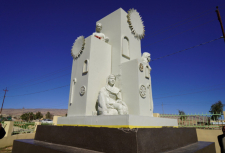Yezidis in ancient India, or Indians in ancient Mesopotamia?: Re-imagining Ancient Yezidi Origins

Mija Sanders
University of Arizona, Tucson, USA
Imperial Legacies and Yezidi Futures
Most of the Yezidi families that migrated to the U.S. between 1995-1997 left in order to escape the Saddam Hussein regime. Further, many Yezidi men who migrated to Arizona served as interpreters6 during the 2004-2010 U.S. military occupation. Due to their service to the U.S. military they were granted special visas to migrate to the U.S. and apply for green cards. According to interviews, most Yezidis in Arizona moved to the U.S. through these visas and through family reunification. More recently families who escaped ISIS captivity have become the most recent refugees in the Yezidis diaspora. Due to the legacy of U.S. imperial presence in Iraq and the precedence of migration assistance for Kurdish translators to the U.S. Yezidis had a lot of hope that the U.S. government would come to their assistance when ISIS attacked.
In early August of 2014 the attack upon Yezidis at Mt. Sinjar had a major impact on the community, at home and abroad. The “Islamic State of Iraq and Levant” (ISIL/ISIS) or “Daesh” expanded into Yezidi towns and villages at Sinjar (Dulz, 2016). Dulz noted that this event resulted in the displacement of 200,000-300,000 Yezidis from Northern Iraq. ISIS executed all the Yezidi men they captured who were over the age of 14, an estimated 2,000-4,000 men. Many unmarried Yezidi women were abducted into slavery and many were subjected to systematic rape by their owners. Many elderly women and men were killed, and married women with children were also abducted into slavery. Yezidi children were abducted to be trained as ISIS fighters and spies against their own community (Dulz, 2016, pg. 133). As of May 2019, ISIS territories have been largely destroyed and thousands of women and children have taken refuge in refugee camps (Drury, 2019). Other women have traveled to Germany to receive psychological care (Thomas, 2018). Several scholars have noted changes in the practice of the Yezidi faith in Iraq and in the diaspora following the 2014 attacks (Otten, 2018; Spät, 2018).
Overall, a greater sense of Yezidi identity has been emphasized in the diaspora, in opposition to other historical affiliations such as Kurdish identity. Seif, a Yezidi activist in Arizona and former U.S. army translator in Iraq, articulated his story of Yezidi recognition and Yezidis’ relation to the U.S. government. Before the 2003 American war, even if you went to Iraq, no one had heard about Yezidis. They say they build a new government and adviser for a new constitution. No one recognized Yezidis and now everyone pronounced the word “Yezidi.” At least they know us now. After 2014 after ISIS attacked us, on the 3rd or 4th day Yezidis in America demonstrated in front of the White House saying, “we are not gonna leave until you do something for us.” By then the U.S. army had pulled out. ISIS took over 1/3 of the land of Iraq and the U.S. wasn’t there because they felt kind of kicked out, and their proposed agreement wasn't recognized by the Iraqi government. Then Obama recognized Yezidis and at the same time the Iraqi Parliamentarian leader cried to get support for Yezidis (this was broadcast globally by the media). Obama said he would help Yezidis. Since then the U.S. army went to the mountains of Sinjar (where the Yezidi people sought refuge) and sent food and water, and the coalition forces fought against ISIS. From 2014 until now the U.S. army worked to defeat ISIS. Today ISIS has no land but many fighters.
Tags:
Yezidis in ancient India, or Indians in ancient Mesopotamia?: Re-imagining Ancient Yezidi Origins

Mija Sanders
University of Arizona, Tucson, USA
Imperial Legacies and Yezidi Futures
Most of the Yezidi families that migrated to the U.S. between 1995-1997 left in order to escape the Saddam Hussein regime. Further, many Yezidi men who migrated to Arizona served as interpreters6 during the 2004-2010 U.S. military occupation. Due to their service to the U.S. military they were granted special visas to migrate to the U.S. and apply for green cards. According to interviews, most Yezidis in Arizona moved to the U.S. through these visas and through family reunification. More recently families who escaped ISIS captivity have become the most recent refugees in the Yezidis diaspora. Due to the legacy of U.S. imperial presence in Iraq and the precedence of migration assistance for Kurdish translators to the U.S. Yezidis had a lot of hope that the U.S. government would come to their assistance when ISIS attacked.
In early August of 2014 the attack upon Yezidis at Mt. Sinjar had a major impact on the community, at home and abroad. The “Islamic State of Iraq and Levant” (ISIL/ISIS) or “Daesh” expanded into Yezidi towns and villages at Sinjar (Dulz, 2016). Dulz noted that this event resulted in the displacement of 200,000-300,000 Yezidis from Northern Iraq. ISIS executed all the Yezidi men they captured who were over the age of 14, an estimated 2,000-4,000 men. Many unmarried Yezidi women were abducted into slavery and many were subjected to systematic rape by their owners. Many elderly women and men were killed, and married women with children were also abducted into slavery. Yezidi children were abducted to be trained as ISIS fighters and spies against their own community (Dulz, 2016, pg. 133). As of May 2019, ISIS territories have been largely destroyed and thousands of women and children have taken refuge in refugee camps (Drury, 2019). Other women have traveled to Germany to receive psychological care (Thomas, 2018). Several scholars have noted changes in the practice of the Yezidi faith in Iraq and in the diaspora following the 2014 attacks (Otten, 2018; Spät, 2018).
Overall, a greater sense of Yezidi identity has been emphasized in the diaspora, in opposition to other historical affiliations such as Kurdish identity. Seif, a Yezidi activist in Arizona and former U.S. army translator in Iraq, articulated his story of Yezidi recognition and Yezidis’ relation to the U.S. government. Before the 2003 American war, even if you went to Iraq, no one had heard about Yezidis. They say they build a new government and adviser for a new constitution. No one recognized Yezidis and now everyone pronounced the word “Yezidi.” At least they know us now. After 2014 after ISIS attacked us, on the 3rd or 4th day Yezidis in America demonstrated in front of the White House saying, “we are not gonna leave until you do something for us.” By then the U.S. army had pulled out. ISIS took over 1/3 of the land of Iraq and the U.S. wasn’t there because they felt kind of kicked out, and their proposed agreement wasn't recognized by the Iraqi government. Then Obama recognized Yezidis and at the same time the Iraqi Parliamentarian leader cried to get support for Yezidis (this was broadcast globally by the media). Obama said he would help Yezidis. Since then the U.S. army went to the mountains of Sinjar (where the Yezidi people sought refuge) and sent food and water, and the coalition forces fought against ISIS. From 2014 until now the U.S. army worked to defeat ISIS. Today ISIS has no land but many fighters.
Tags:

























